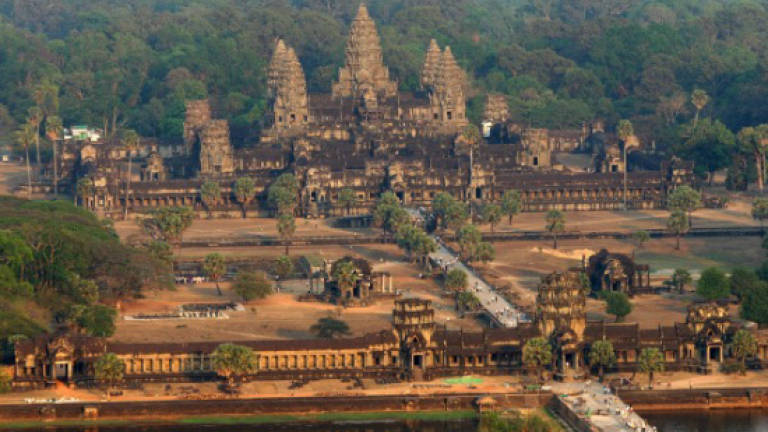Secrets of lost Cambodian cities to be revealed

ARCHAEOLOGISTS are set to unveil further details of medieval cities hidden under jungle in Cambodia near Angkor Wat, the world's largest religious complex, the Guardian newspaper said Saturday.
While the research has been going on for several years, the new findings reportedly reveal the scale of the cities and temple complexes to be significantly bigger than was previously thought.
The research, drawing on airborne laser scanning technology, is expected to be unveiled in full at the Royal Geographic Society in London on Monday by Australian archaeologist Damian Evans.
"We have entire cities discovered beneath the forest that no one knew were there – at Preah Khan of Kompong Svay and, it turns out, we uncovered only a part of Mahendraparvata on Phnom Kulen (in a 2012 survey)," Evans was quoted as saying by the Guardian.
"This time we got the whole deal and it's big – the size of Phnom Penh big."
Evans's findings are also set to be published in the Journal of Archaeological Science.
The Royal Geographic Society did not immediately respond to a request for comment.
Research conducted by Evans and others in 2012 confirmed the existence of Mahendraparvata, an ancient temple city near Angkor Wat.
But it was only when the results of a larger survey in 2015 were analysed that the scale of the settlements became apparent.
In a recent blog entry on the website of the Cambodian Archaeological Lidar Initiative, Evans posted some of the new topographical scans and said many more would be added in the coming months.
To create the maps archaeologists mounted a special laser scanner on the underneath of a helicopter which scans the area and is able to see through obstructions like trees and vegetation.
Among the scans already published are a detailed map of a huge temple complex known as Preah Khan of Kompong Svay, a series of iron smelting sites dating back to the Angkor era and new information on the complex system of waterways that kept the region running.
Evans said that even in a less built up region near Mahendraparvata the scans showed "a huge number of new temples, ancient dams, ponds, quarries and other evidence of Angkor-era expansion into these ranges".
Angkor Wat, a UNESCO World Heritage site seen as one of the most important in southeast Asia, is considered one of the ancient wonders of the world.
It was constructed from the early to mid 1100s by King Suryavarman II at the height of the Khmer Empire's political and military power and was at one time the largest pre-industrial city in the world.
While the Khmer Empire was initially Hindu it increasingly adopted Buddhism and both religions can be seen on display at the complex. — AFP